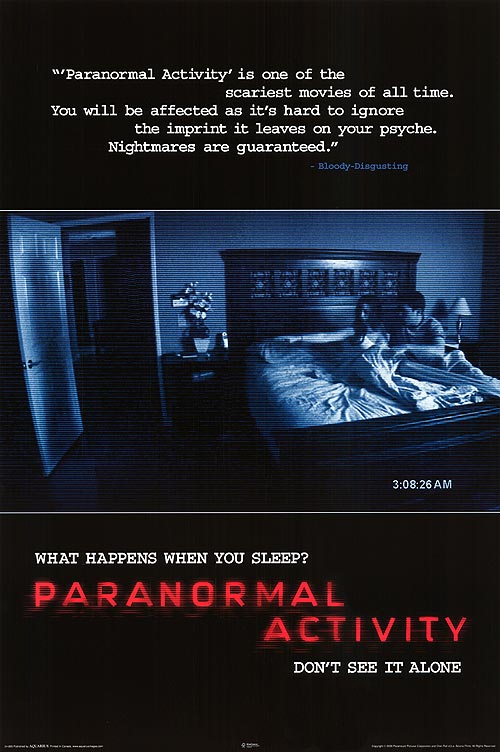SYNOPSIS
Paranormal Activity (2007) is the first of a series of films centered on a young couple, Katie and Micah, who are being haunted by a supernatural presence in their new San Diego home. Katie claims she has been haunted by an evil presence since she was a child. Micah attempts to prove Katie wrong by setting up a camera in their bedroom, and showing her that it is all “in her head.”
As the nights progress, there are more occurrences that become less explainable by just “dreams.” The idea that there is a demon in the house that has long followed Katie becomes more plausible to both Katie and Micah.
Three of Jason Blum’s most famous horror films depict three of the four primary disorders that make up the Dissociative Disorders. Sinister (2012) demonstrates Dissociative Fugue (DSM-IV); Insidious (2010) portrays the features of Dissociative Amnesia; and Paranormal Activity (2007) depicts Dissociative Identity Disorder. The 2007 film depicts the progressive involvement the “demon” plays, wreaking mayhem in their lives.
THE PSYCHIATRY OF PARANORMAL ACTIVITY
Paranormal Activity serves as an opportunity to teach the Dissociative Disorders, specifically Dissociative Identity Disorder (DID). The paranormal activity of demons is viewed as a dissociation that results in identity disruptions, the possession-form phenomena, and the gaps in recall.
One night Katie appears to be in a trance, standing beside the bed staring at Micah for over 2 hours and then leaves the room and ends up outside. The next morning she has no recollection of her leaving the house (Day 15, Katie and Micah’s house):
- “What do you remember from this? – Were you dreaming?”
- “I don’t remember anything. I remember standing in the doorway and you pointing a camera at me. And you were all freaked out. I don’t, I don’t remember standing here.”
While this serves as a good example of the amnesia that can be experienced in DID, the additional finding of a distinct personality state/experience of possession makes DID more likely than Dissociative Amnesia:
- “…You went outside and sat on the swing. And I went inside to bring you a blanket ’cause you refused to leave in this catatonic, weird state you were in.”
Later, Micah finds Katie in a catatonic state, sitting in the hallway, gripping a cross so tightly that it bloodies her palm, further describing the catatonia that can be experienced in DID.
In the final scene, when Katie, in another “possessed” state, screams for Micah, he rushes to her rescue…and his demise. Micah’s body is violently hurled at the camera, where we see Katie over his body with a sinister grin on her demonic-looking face. She is the “demon.” Micah’s body was discovered on this date, October 11th.

